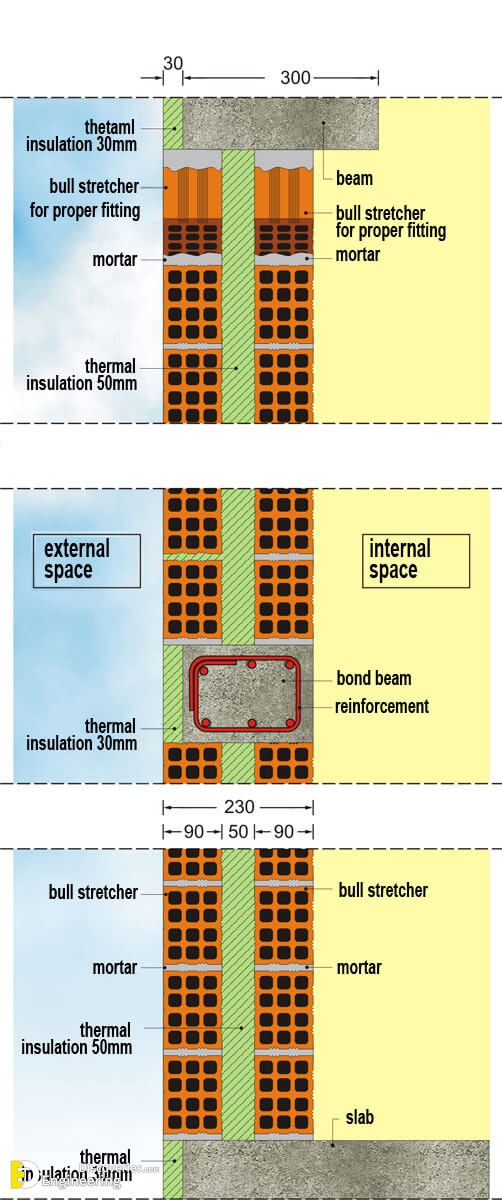When the thermal insulation is embedded in the exterior or the interior shell of the building and it is independent of the structural frame’s construction, the solution is clear and most of all effective. However, when the thermal insulation is placed on the exterior or the interior surface of the structural frame as part of the total thermal insulation as, for example, in buildings with masonry walls, various issues arise. These include thermal bridges but also constructional matters regarding earthquake resistant behaviour.
External blind wall with 2 bull stretchers
In masonry infills, thermal insulation is usually placed inside the masonry walls. A typical bond beam reinforcement is stirrups Ø6/150 and 2 to 4 Ø10 bars (depending on the bond’s width) in both the upper and lower part of the beam. The steel class may be B500A.
The most practical way to anchor the bond beams’ rebars inside the columns is by creating holes to the column sides and implanting starter bars by means of resin adhesives.
Eternal blind wall with 2 stretchers
The 120 mm thick wall when compared to the one with a thickness equal to 90 mm, has disadvantages such as higher cost, higher weight and a 120-90=30 mm reduction of the interior space. On the other hand, it has advantages such as better brick fitting, higher heat capacity (of the layer towards the inner face) and the possibility to embed electrical piping.











